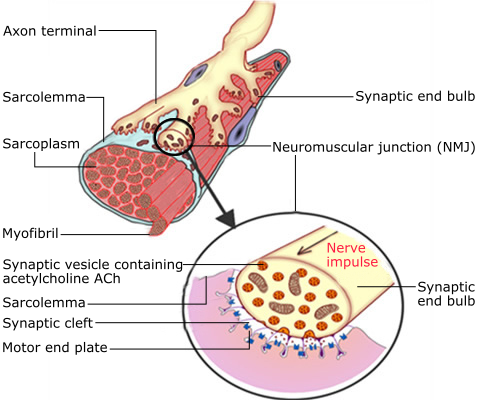Introduction
Succinylcholine has a very short duration of action due to rapid metabolism and does not need additional pharmacological reversal of its effect at the neuromuscular junction.
The non-depolarizing agents compete with acetylcholine for the nicotinic receptors at the neuromuscular junction (Fig 1). They have a much longer duration of action than succinylcholine and reversal of their effects is often needed at the end of surgery to ensure muscle power is restored.
Although acetylcholine only needs to occupy a small proportion of receptors to trigger muscle contraction, non-depolarizing muscle blockers need to occupy the majority (about 90%) of the receptors to produce blockade. The presence of 'spare' receptors at the neuromuscular junction (NMJ) ensures there is a large margin of safety for signal transduction from nerve to muscle.
Acetylcholine (ACh) has a very short half-life at the NMJ due to the presence of its metabolizing enzyme acetylcholinesterase (AChE).
The AChE inhibitor neostigmine is used to increase the concentration of ACh at the NMJ. This enables ACh to compete successfully with the non-depolarizing blocker and so restore normal muscle function.
